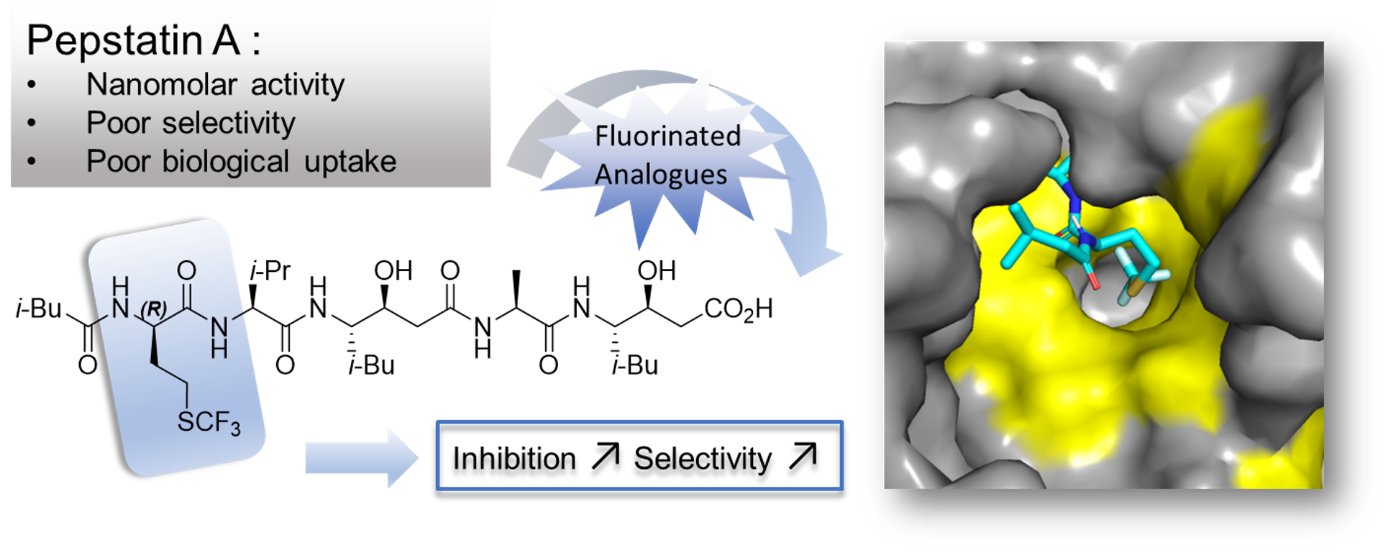You are here :
- Unité de recherche
- BioCIS
- Home
- Research topics
- Cancer treatments
- Inhibition of Cathepsin D
Inhibition of Cathepsin D
Cathepsin D is an aspartic protease found in most mammalian cells and tissues. For several years, the scientific community has been interested in the relationship between increased levels of Cathepsin D and certain types of cancer. Several studies have shown a direct link between elevated Cathepsin D levels and metastasis formation. Thus, the use of Cathepsin D inhibitors could be a promising strategy for cancer treatment. Pepstatin A, a pentapeptide containing two Statine residues, a non-natural β-hydroxy-γ-amino acid, is the best-known inhibitor with a sub-nanomolar IC50. However, due to its low metabolic stability, poor selectivity, and unfavorable pharmacokinetic properties, its use for cancer treatment is limited.

Our laboratory's expertise in the asymmetric synthesis of fluorinated amino acids has enabled us to develop a new series of fluorinated analogs of Pepstatin A. The introduction of fluorinated amino acids into the peptide chain of Pepstatin A could indeed improve its metabolic stability, pharmacokinetic properties, and selectivity toward other aspartic proteases, and could open the way to ligand screening methods based on 19F NMR.
In this context, we synthesized and evaluated several fluorinated peptide inhibitors of Cathepsin D, and showed that replacing Valine at the N-terminal position with D-Trifluoromethionine in the structure of Pepstatin A leads to a highly active and more selective analog.
- Publication selection
-
- Highly Stereoselective Multigram Scale Synthesis of (3S,4S)-Statine and (3S,4S)-N-Benzylstatine; Ben Haj Salah, K.; Terzani, F.; Pietri, M.; Zanato, C.; Chelain, E.; Pytkowicz, J. Results Chem. 2022, 4 , 100333.
- Synthesis and Biological Evaluation of Selective Pepstatin Based Trifluoromethylated Inhibitors of Cathepsin D; Terzani, F.; Belhattab, S.; Le Guern, A.; Guitot, K.; Monasson, O.; Zanato, C.; Chelain, E.; Leroy-Dudal, J.; Pytkowicz, J. Eur. J. Med. Chem. 2024, 267, 116178.


